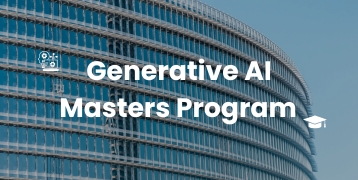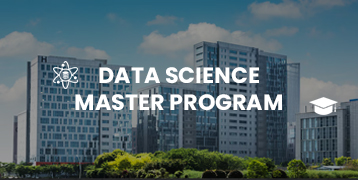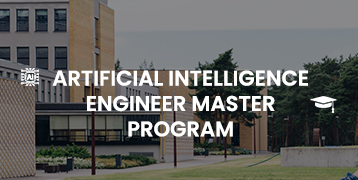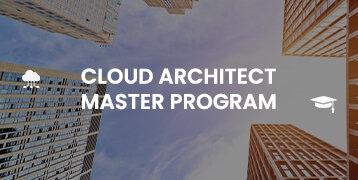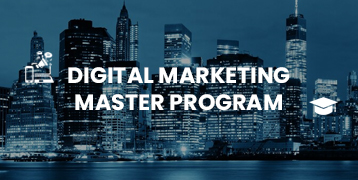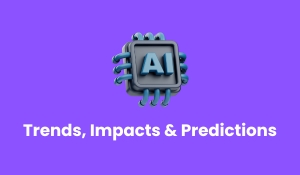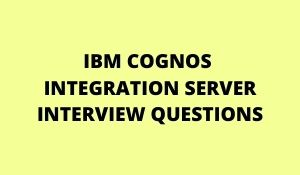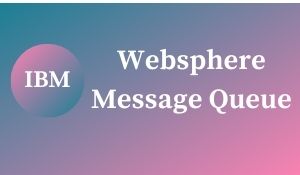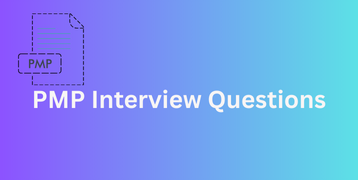
Guidelines for completing the PMP Interview Questions and Answers
The Project Management Institute (PMI) offers the Project Management Professional (PMP) license, which refers to their capacity to inspire and lead both projects and teams successfully. Getting a PMP certification include to a project leading skills, training, and capacity to lead and manage projects successfully.
A PMP certification interview may be performed as part of a job search to figure out someone project management abilities. Employers check their knowledge of project leadership processes and values, as well as their ability to apply these ideas in practical situations through this interview.
Common PMP Interview Topics
Project Management Processes: Get ready to discuss your previous experiences with the five fundamental process groups: initiating, planning, execution, monitoring and control, and closure.
Information Topics: You should be understanding with the PMBOK eleven knowledge categories, including risk management, quality control, scope management, time management, and cost management.
Leadership and Team Management: Look for to be asked about your dispute resolution strategies, team motivation, and team management style.
Solving problems and Making Decisions: The interviewers will be looking for how best to solve problems and make sound decisions under pressure.
Communication Skills: Effective interaction is essential for successful project management. Give a list of how you communicate with clients, teammates, and stakeholders.
Achievements of the Project and Success Stories: Provide particular examples of your managed project successes, as well as the problems you encountered and solutions you developed.

Build in Your Future with PMP Certification – GoLogica Expert Guidance Fuels Your Growth!
The Leading Project Management Interview Questions.
- Tell us about yourself.
It is a regular starting question during interviews. To choose follow-up questions and determine how well you could fit into the position, the interviewer aims to get a description of your career path and key competencies.
Starting with your current situation and working your way down to the companies you’ve worked for, the roles you’ve held, your areas of strength, and the number of successful projects you’ve worked on would be a great way to answer this issue. Add the number of years you have worked; if you are a novice, elaborate on your schooling. Finish your response by discussing your professional objectives or what you aim to accomplish at this employment.
- Please explain to us just about the most important projects you worked on.
The interviewer is looking for particular skills in your response to determine your service, what kind of projects you have worked on, your working style, and the size of the team you managed, and so on.
Begin by presenting the most important aspects of the project. Include the team size, aim, outputs, and the method utilized to complete it. Expound on the outcome using some crucial statistics and metrics obtained by the end of it. It is best to respond honestly, mentioning any successes and lessons learned.
3. What is the PMP Certification, and why is it important?
PMP Certification is a professional qualification provided by the Project Management Institute (PMI). It is one of the most prestigious project management qualifications. The certification confirms that a project manager has the necessary experience, education, and competency to successfully lead and manage projects. It is crucial since it improves your skills, expands your career opportunities, and is frequently required for many project management positions.
- What is project plan?
A strategy for a project also known as a work plan, is a precise overview of the objectives, targets, and decisions that your team will be carrying through for a certain project. Your project plan should include details concerning your project’s timetable, scope, time frames, and outputs at each point of the project’s duration.
- Do you have any budget management experience?
Yes, I have experience with handling budgets, which includes planning, monitoring, and controlling financial resources to guarantee effective and efficient use of cash. I am adept at assessing financial data, anticipating spending, and making sound judgments to maximize budget allocation and fulfill corporate objectives.
- Which was one of the biggest mistakes you have committed in your past projects? How such does changed your method to work?
One of the biggest mistakes I’ve made in past projects was underestimating the time required for certain tasks, which led to delays and increased pressure on the team. This experience taught me the importance of thorough planning and realistic scheduling. Now, I prioritize detailed risk assessments and buffer time to accommodate unexpected challenges, ensuring more accurate project timelines.
7. How do you boost working together with your teammates?
I encourage open communication by holding regular team meetings and creating channels for feedback. I promote a culture of mutual respect and trust, ensuring everyone feels valued and heard. I also set clear goals and expectations, which help align the team and foster cooperation. Additionally, I use collaborative tools to enhance teamwork and track progress.
- 8. Can you explain the five process groups of project management?
The five process groups in project management, as defined by the PMBOK Guide, are:
• Initiating: Defines and authorizes the project or phase.
• Planning involves defining the scope, objectives, and plan of action to attain them.
• Execute the project management strategy to meet standards.
• Monitoring and controlling project progress and performance. Identifying and implementing necessary adjustments.
• Ending: Finishing all project activities to officially end the project or phase.
- What are the key knowledge areas in PMP?
The PMP framework includes ten key knowledge areas:
- Integration Management: Ensuring that the various elements of the project are properly coordinated.
- Scope Management: Defining and managing what is and is not included in the project.
- Schedule Management: Managing the timely completion of the project.
- Cost Management: Planning and controlling the project budget.
- Quality Management: Ensuring that the project will satisfy the needs for which it was undertaken.
- Asset Leadership: recognizing, procuring, and overseeing specific to a project assets.
- Effective interaction with management necessitates the timely and accurate gathering, delivery, and preservation of project data.
- Risk handling comprises identifying, assessing, and addressing project risks.
- Acquisition Management entails procuring items and services from outside the project team.
- Stakeholder Prevention: Identify and manage project stakeholders.
- What is a Work Breakdown Structure (WBS)?
A Work Breakdown Structure (WBS) is an organized outline of the total scope of work to be accomplished by the project team. It divides the project into smaller, more manageable components known as “work packages.” The work breakdown structure (WBS) aids in the organization and definition of the project’s overall scope, making project planning, management, and evaluation easier.
- Which are a difference between risk reduction and risk contingency?
• Risk Mitigation: Preventing or minimizing the impact of a risk through proactive measures. It is about developing and implementing methods to reduce potential hazards.
• Risk Contingency: Planning involves preparing for actions to be taken in case of a risk incident. It entails allocating resources and developing remedies to hazards that emerge despite mitigation measures.
- What is your method of delegation style?
My delegation method focuses on empowering others by clearly defining tasks, providing required resources, and setting clear expectations. I encourage cooperation, trust team members to exploit their skills, and provide assistance and guidance when necessary. I also value feedback and constant improvement in order to achieve effective outcomes.
- What is Monte Carlo simulation, and the way does it apply to risk management?
The Monte Carlo simulation is a quantitative risk analysis technique that uses random sampling and statistical modeling to predict the impact of hazards on project outcomes. It increases understanding of the probability distribution of project variables and enables more detailed assessment of probable risk outcomes.
- Where refers to the Critical Path Method (CPM)?
The critical path method (CPM) is a project management strategy for determining the longest chain of dependent tasks and the shortest project duration.
- What is Generated Value Management (EVM)?
Earned Value Management (EVM) is a project management technique that assesses project performance by comparing projected and actual progress and costs, providing information about project health.

- What is a project charters, and what does it cover?
A project plan is an official document that details the project’s aims, scope, stakeholders, and key responsibilities. It serves as a reference for project planning and execution.
17. How do you manage modifications to the project?
To manage changes in a project, I use a change management approach that includes assessing the impact of proposed modifications, receiving relevant clearances, and revising project documentation accordingly. This guarantees that modifications are systematically assessed, authorized, and implemented with minimal disruption to project objectives.
- How do you sure that project objectives and company goals are aligned?
To understanding corporate strategy, creating project objectives that match strategic goals, and communicating progress to stakeholders on a regular basis all help to guarantee alignment.
- Which project management method do you prefer?
I favor the agile project management style because it encourages flexibility, collaboration, and iterative development. Agile enables teams to respond rapidly to changes, produce value gradually, and constantly improve by providing regular feedback and evaluation.
- How do you handle project risks?
Risks are handled in projects by identifying, assessing, and prioritizing them, devising reaction strategies, monitoring risk triggers, and implementing mitigation plans as necessary.
21. How can you promote effective team collaboration?
To promote effective team collaboration, create open communication, establish clear responsibilities and expectations, encourage feedback, and use collaboration technologies to facilitate information sharing.
- What is a Project Management Organization (PMO)?
A Project Management Office (PMO) is a centralized body that standardizes project management techniques, provides governance, and assists project managers throughout a company.
- What are the most essential skills for a project manager?
The most crucial characteristics of a project manager are good communication skills, leadership ability, and adaptability. They should be able to communicate ideas and expectations, motivate and guide their team, and adapt plans as needed to meet changes or problems. Additionally, problem-solving abilities and attention to detail are critical for project success.
- What is difference with a project, program, and portfolio?
• A project is a temporary activity with defined goals, timelines, and deliverables. It entails tasks and resources aimed at producing a distinct product, service, or outcome. Projects have specific goals and a distinct beginning and end.
• A program is a coordinated group of related projects that provide benefits and control beyond individual project management. Programs aim to achieve strategic objectives by bringing together several initiatives with a common goal or topic.
• A portfolio is a collection of projects, initiatives, and work managed together to meet strategic corporate goals. Portfolio management entails choosing, prioritizing, and controlling various components according to strategic alignment and Resource availability is critical for maximizing organizational value.
- What strategies can you use to acquire project requirements?
Interviews, surveys, and workshops can be used to gain stakeholder input for project requirements. Document analysis and observation also aid in the identification and understanding of existing procedures and needs. These strategies ensure that requirements are collected comprehensively and accurately, resulting in successful project planning.
- What are the three major difficulties facing our industry today, and how can they be effectively addressed?
To remain relevant in the face of rapid technology advancements, course content must be updated on a regular basis.
Solution: Regularly review and update courses, work with industry experts, and incorporate cutting-edge tools and technology into the curriculum.
Ensure Engagement and Retention:
• Distractions and low motivation among online learners might result in low course completion rates.
• To improve engagement and retention, incorporate interactive content like quizzes and live sessions, offer individualized feedback, and foster a supportive community.
Meeting Different Learner Needs:
• Challenge: Learners have diverse backgrounds, experience, and learning preferences.
• Solution: Offer personalized learning routes, multilingual support, and leverage.
- How well do you understand project management’s triple constraint triangle?
The triple constraint triangle in project management, often known as the project management triangle, is made up of three major components: scope, time, and budget. These factors are interconnected, which means that any change in one will most likely affect the others:
1. Scope: The project’s specified goals, deliverables, and tasks determine its boundaries and objectives. It determines what effort is required to accomplish the project successfully.
2. Time: Describes the project timeline, including deadlines and milestones. It establishes the schedule for completing tasks and delivering project outcomes.
3. Cost: Indicates the financial resources needed to finish the project. It comprises expenses for supplies, labor, equipment, and other
- Determine Planned Value, Actual Cost, and Earned Value.
Planned Value (PV), Actual Cost (AC), and Earned Value (EV) are important indicators used in Earned Value Management (EVM) to evaluate project performance.
1. Planned Value (PV) refers to the quantity of work expected to be performed within a particular timeframe. It represents the value of the work scheduled in accordance with the project plan.
2. Actual Cost (AC) refers to the complete cost of work performed at a certain moment. It comprises all expenses associated with the work accomplished.
3. Earned worth (EV) refers to the worth of work accomplished within a given time frame, as assessed by the project budget. It reflects the quantity of budgeted work that has been completed.
- What does RAID mean in project management?
In project management, RAID is an acronym for Risks, Assumptions, Issues, and Dependencies. It is a framework for identifying, documenting, and managing key factors throughout the project lifecycle in order to ensure project success and minimize potential issues.
- Why is it important to generate a RAID log?
Creating a RAID log is required to track and manage risks, assumptions, issues, and dependencies during a project. It contributes to early detection of possible problems, validation of assumptions, fast resolution of issues, and management of dependencies, all of which improve project control and success.

- How would you approach risk management in a project? Explain the steps involved, from identification to mitigation.
To approach risk management, I start with identification to recognize potential risks, followed by assessment to evaluate their impact and likelihood. Next, I develop mitigation strategies to address or reduce risks and monitor them throughout the project to ensure effective management and timely response.
- Describe the many stakeholders involved in a project and how you would effectively manage their expectations.
Sponsors, who give financial support and strategic direction, customers, who are the end users or recipients of the project’s deliverables, team members, who are in charge of carrying out tasks, and suppliers, who supply necessary resources or services, are all examples of project stakeholders. To effectively manage their expectations, I would maintain regular contact, establish clear targets and deliverables, respond to complaints quickly, and involve stakeholders in decision-making processes to ensure alignment and satisfaction throughout the project’s lifecycle.
- What are your recommended strategies for monitoring project progress and detecting potential roadblocks?
Gantt charts and Kanban boards, which give visual representations of tasks, deadlines, and dependencies, are my preferred methods for tracking project progress. In addition, I use status meetings and progress reports to routinely review project health and identify potential impediments. Earned Value Management (EVM) is also useful for comparing performance to the project baseline and forecasting potential concerns.
- How do you handle changes to project scope and ensure they are consistent with overarching goals?
To manage changes to the project scope, I use a thorough change control procedure that includes assessing the impact of proposed modifications, receiving relevant clearances, and updating project documentation.
I guarantee that modifications are consistent with overall objectives by incorporating key stakeholders in the review process, reviewing how changes affect project goals and deliverables, and changing project plans to preserve strategic alignment.
- You will use QA and QC to assure the quality of the final deliverables. What is the difference between them?
QA (Quality Assurance) focuses on defect prevention. Strive for flawless execution and process improvement to avoid errors in your offerings.
QC (Quality Control) is the process of discovering flaws. Measure, test, and monitor to swiftly identify and remedy faults or ensure the quality of your offerings.
- How do you deliver bad news?
As a project manager, you’ve most likely had to give terrible news before, and your interviewer is curious about how you do it. They want to see that you are attentive and forthright with everyone, that you have all of the information first, and that you have considered how this news will affect all of your team members, not just the individual to whom you are delivering the terrible news directly.
- How have you dealt with disgruntled employees?
The interviewer wants to see that you are a critical thinker and a good problem solver. Even if you don’t have a specific example to share, explain that you always care about your team members and want to get to the base of the problem and figure out why they’re dissatisfied. While it may be impossible to appease every disgruntled employee, the interviewer simply wants to see that you are willing to make an effort to resolve the matter and remain professional throughout.
- What are some examples of situations when you maintained your pledge despite the difficulty?
Consider a time when you unwillingly agreed to a difficult request because, as a project manager, you are supposed to get things accomplished. Explain to the interviewer how you handled your work and time to ensure that you could keep an ambiguous promise. Even if you had a lot on your plate, interviewers want to hear specific examples of how you successfully accommodated additional requests.
39. What is the significance of a project kick-off meeting?
A project kick-off meeting establishes a common understanding of project goals, roles, and expectations, fostering team alignment and setting the tone for collaboration.
40. How do you identify and manage project dependencies?
Project dependencies are identified through task analysis and managed by sequencing tasks, using dependency tracking tools, and communicating with relevant stakeholders to minimize delays.
41. What is the difference between a risk and an issue?
A risk is a potential future event that could impact a project, while an issue is a current problem that requires immediate resolution.
42. How do you ensure quality in project deliverables?
Quality is ensured through setting clear quality standards, conducting regular inspections and audits, using quality management tools, and fostering a culture of continuous improvement.
Here are 50 difficult PMP (Project Management Professional) interview questions, each followed by a concise answer.
43. How do you handle a project that is not meeting quality standards?
To handle a project not meeting quality standards, conduct a root cause analysis, implement corrective actions, review quality processes, and communicate with stakeholders to realign expectations.
44. What is the difference between a deliverable and a milestone?
A deliverable is a tangible output or result produced during a project, while a milestone is a significant point or event marking progress within the project timeline.
45. How do you manage project communications?
Project communications are managed by developing a communication plan, using appropriate tools and channels, maintaining regular updates, and ensuring transparency with stakeholders.
46. What is a project risk response strategy?
A risk response strategy is a plan to address identified risks, including avoiding, transferring, mitigating, or accepting risks based on their impact and probability.
47. How do you handle a project that lacks stakeholder support?
To handle a project lacking stakeholder support, engage stakeholders through regular communication, address concerns, highlight project benefits, and build relationships to gain their buy-in.
48. What is a project life cycle?
A project life cycle is a series of phases that a project goes through, from initiation to closure, including planning, execution, monitoring, and controlling.
49. How do you ensure project deliverables meet customer expectations?
Ensure deliverables meet customer expectations by gathering clear requirements, involving customers throughout the project, and conducting regular reviews and quality checks.
50. What is a project feasibility study?
A project feasibility study evaluates the project’s viability, assessing factors like technical feasibility, financial costs, and potential risks
Related course

